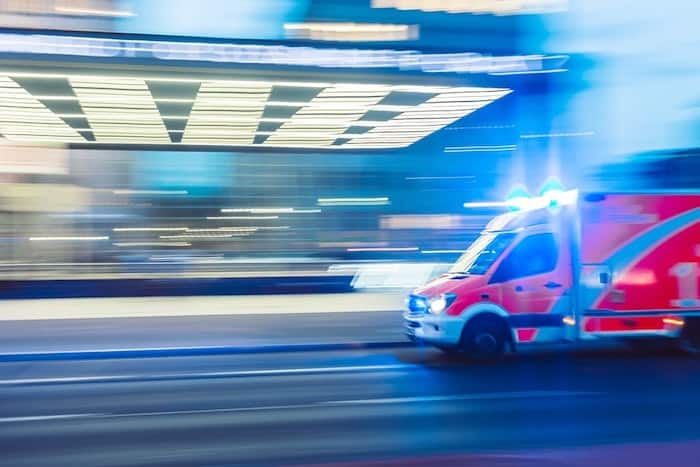A well-trained paramedic cannot function optimally without a well-organized kit. The design of the case is paramount to the organization of supplies. A paramedic or a first responder must be familiar with the layout of the medical equipment and supplies inside the bag. The design of the bag will dictate the convenience of reaching into those supplies as and when required. Without a proper layout, even an aesthetically pleasing bag can be useless in an emergency. The following aspects must be considered while designing custom medical equipment bags for Emergency Medical Service personnel.
Durability
The durability of a custom medical equipment bag is paramount. These bags have to endure the harshest of treatments. The outside should ideally be nylon or polyester. The surface must be weatherproof and abrasion-resistant. Other parts of the bag, such as the zippers and straps must be sturdy and long-lasting. YKK zippers are usually the most reliable choice. Many paramedics also claim that velcro is preferable to zippers.
Convenience
The interiors of the bag must get designed while keeping a paramedic’s convenience in mind. The storage space should be able to house a long list of equipment and supplies. A first responder should have all the essentials in one place. That would make it convenient for them to carry all the necessities in one trip from the vehicle to the patient. The bags should ideally have multiple straps to make it easy to carry. Shoulder straps are useful in most circumstances. But sometimes paramedics also need to carry the bag like a backpack. Multiple options for straps will ensure that the paramedic can carry the bag conveniently to the patient in any circumstances.
Organization
The internal organization is the most essential aspect of a paramedic’s bag. The proper arrangement of equipment and supplies can be a matter of life and death for a patient. A paramedic can lose valuable time rummaging through the insides of the bag while looking for the supplies required. It can also be frustrating for the personnel, which can affect a patient’s treatment.
The equipment and supplies should be secure inside the bag. Since the bag might get carried roughly, loose equipment can get damaged, or supplies can spill over. Ideally, the case should have sections to house the supplies. There should be external pockets that facilitate storage and organization. The bags can also have removal compartments or modules to provide versatile storage. The sections must get placed in the order of a paramedic’s needs. For example, first aid supplies, chest seals, and respiratory facilitators should be readily accessible than supplies that are required less frequently. Bandages might not be needed for every emergency, but there is an urgency in their need. That is why there should be a conveniently reachable space to store multiple types of bandages.
But to compartmentalize for the sake of making sections can be counterproductive. Too many compartments can add to the confusion at the time of need. Therefore it is necessary to consult a paramedic while designing the insides of a medical emergency bag. Many paramedics prefer the use of internal lanyards to attach essential equipment. Lanyards facilitate access of small equipment such as Oximeters that are needed urgently. Basic life support kits should always be accessible first.
To understand how things must get organized in an emergency medical bag, let us look at the list of equipment and supplies that paramedics need to carry.
Clinical Assessment Equipment
- Stethoscopes
- Blood pressure monitor
- Oximeter
- Thermometer
- CO2 monitor
Ventilation Support Equipment
- Basic oropharyngeal airways.
- Manual suction devices like V-Vac.
- Bag Valve Mask (BVM) such as Cyclone pocket.
- Needle decompression kit or any other pneumothorax products.
- Tracheal intubation devices.
Supplies
- Hemostatics such as Quick Clot or Celox.
- Bandage wraps of different sizes.
- An assortment of gauze. Some gauzes have Hemostatics or other dressings pre-included.
- Heavy-duty industrial tape.
- Occlusive chest seals such as Bolin or Asherman to seal off open chest wounds.
- Tourniquets to stop profuse bleeding.
Other than these, there is a variety of supplies and medicines that paramedics need to carry in their bags. They must carry an assortment of adhesive bandages along with supplies to clean minor wounds, antibiotic creams, and breathable tapes. They also need to carry small tools to treat minor wounds such as tweezers, small forceps, and scissors. Paramedics need to carry various tools and supplies to stabilize the patients. These tools and supplies usually consist of tapes, braces, and splints. Paramedics also carry compression wraps and cold packs to provide comfort to the patient.
A well-designed bag cannot be a substitute for a well-trained paramedic. But a first responders bag should be ideally equipped to complement his or her skills to save a patient’s life in an emergency.
The Editorial Team at Healthcare Business Today is made up of skilled healthcare writers and experts, led by our managing editor, Daniel Casciato, who has over 25 years of experience in healthcare writing. Since 1998, we have produced compelling and informative content for numerous publications, establishing ourselves as a trusted resource for health and wellness information. We offer readers access to fresh health, medicine, science, and technology developments and the latest in patient news, emphasizing how these developments affect our lives.








